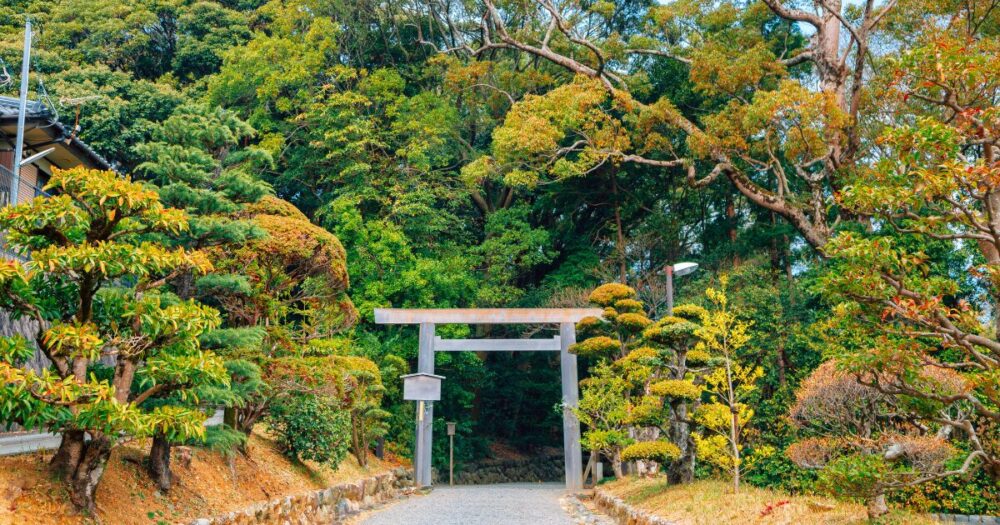Ise Jingu is renowned as Japan’s oldest shrine and a place visited by countless worshippers. Ise Jingu encompasses a total of 125 auxiliary shrines, known as Betsugu, as well as other associated shrines (Sessha, Massha, and Shokansha), each enshrining different deities. These auxiliary shrines have unique atmospheres distinct from the Outer Shrine (Geku) and Inner Shrine (Naiku), allowing visitors to learn about the characteristics and origins of each deity. In this article, we will introduce some of these auxiliary shrines and their fascinating deities. Let’s delve into the mysteries of Ise Jingu!
For those who want to know more about the Ise Grand Shrine, click here.
Auxiliary Shrines
Ise Jingu includes 125 auxiliary shrines, each dedicated to different deities. These shrines have distinct atmospheres from the main Geku and Naiku shrines and offer insights into the unique characteristics and origins of the deities enshrined there.
Tsukiyomi-no-Miya
The enshrined deity is Tsukiyomi-no-Mikoto, the moon god and younger brother of Amaterasu Omikami, the sun goddess. Tsukiyomi-no-Miya also includes the shrines of Tsukiyomi Aramitama no Miya, dedicated to the fierce spirit of Tsukiyomi, Izanagi no Miya for Izanagi no Mikoto, and Izanami no Miya for Izanami no Mikoto.
Takihara-no-Miya
Located in Daiki Town, Watarai District, this auxiliary shrine of the Inner Shrine (Naiku) enshrines the spirit of Amaterasu Omikami. Both Takihara-no-Miya and Takihara Narabi-no-Miya, which are deeply revered as remote shrines, enshrine the sacred spirit of Amaterasu Omikami.
Izawa-no-Miya
An auxiliary shrine of the Inner Shrine, Izawa-no-Miya also enshrines the spirit of Amaterasu Omikami. Situated quietly among rural homes and rice fields, Izawa-no-Miya is notable for its elegant rice planting ceremony held annually on June 24th, recognized as an important intangible folk cultural property of Japan and one of the three major rice planting festivals in Japan.
Yamatohime-no-Miya
Located midway along the Gokuraku Road connecting the Inner and Outer Shrines, Yamatohime-no-Miya enshrines Yamatohime-no-Mikoto, who led the enshrinement of Amaterasu Omikami. It is the newest auxiliary shrine within the Ise Jingu complex.
Tsukiyomi-no-Miya (Geku)
Located near the Outer Shrine (Geku), this auxiliary shrine enshrines Tsukiyomi no Mikoto and Tsukiyomi no Mikoto no Aramitama, the fierce spirit of Tsukiyomi. These deities are also enshrined at Tsukiyomi-no-Miya of the Inner Shrine.
Sessha (Associated Shrines)
Sessha refers to the shrines attached to the Outer and Inner Shrines of Ise Jingu. These shrines enshrine deities other than those of the main shrines, each with distinct roles and powers. Some notable Sessha include:
- Asama Gozen Shrine
- Asama Shrine
- Awa no Oji Shrine
- Ujiyamada Shrine
- Tsunaga Shrine
- Watarai Okunitama Hime Shrine
- Otsuchi Misujin Shrine
- Omizu Shrine
Other Related Shrines
Sarutahiko Shrine
Although not an auxiliary or associated shrine of Ise Jingu, Sarutahiko Shrine has deep mythological ties to Ise Jingu. Sarutahiko Okami guided Ninigi no Mikoto, the grandson of Amaterasu Omikami, to Takachiho and later returned to Sanagata, upstream of the Isuzu River. This region became the location of Ise Jingu’s Inner Shrine. Sarutahiko Okami is revered as the god of “opening the way” and is also worshipped for traffic safety, often invoked during new car purchases.
Conclusion
Ise Jingu comprises 125 shrines, including auxiliary shrines and associated shrines, each dedicated to different deities with unique meanings and roles. Visiting Ise Jingu allows one to experience the depth of ancient Japanese mythology and faith. Additionally, the surrounding natural beauty offers a tranquil and rejuvenating experience for visitors. We invite you to visit Ise Jingu and immerse yourself in its mystical world.



